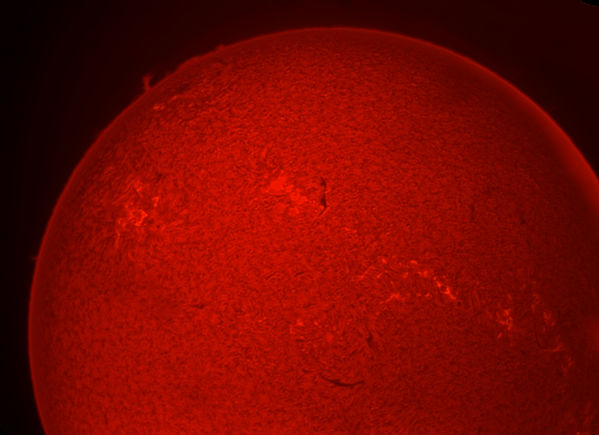A few weeks back I acquired a new, dedicated solar telescope. It is a Lunt LS80 THa with the double stack module. I admit that I was attracted to solar scopes by the Coronado line of telescopes, purchased sometime back by Meade. Upon doing my research, I learned that the Lunt line is made by the founder of Coronado and manufactured in the United States. I purchased from Anacortes Wild Bird and Telescope, a fine establishment with an excellent staff.
Of course I wanted to take images. My first attempt was not worth posting outside of Facebook. And when I tried again, I had more follies with video format. For all programs, RGB24 is a large file, but a good, uncompressed format. And it works.
For this effort I acquired a new camera off of Astromart. It is am Imaging Source DFK 31AU03. It has a 1024×768 CCD, and worked very well for what I wanted to do.
I processed the 2,000 frame videos in Registax, AstroStakkert, and AviStack. AviStack was the slowest, but it produced the best result, based on visual assessment. I am sure all of these programs are good, and I am a beginner on all but Registax. From there, I moved to PixInsight. I only aligned and stacked the images in these programs. All real enhancement was done in PixInsight.
In PixInsight, the real enhancer was deconvolution. I used modified Lucy-Richardson with a combination of 3.0 and 3.5 StDev PSF, with 200 iterations. More the better I always say. Before deconvolution, I doubled the pixel size of the image. I did use HDR transform to add some contrast, but I weighted the deconvolved image more using pixel math. I am happy with the results. Some minor finishing was done in Photoshop.
Here is the first image. I stretched out the image with a mask to show the prominences on the rim of the Sun. It did tweak part of the limb, but I think it looks good.
On the second image, I tweaked the color in Photoshop to brighten it up a bit. I think it reveals the details of the Sun better.


